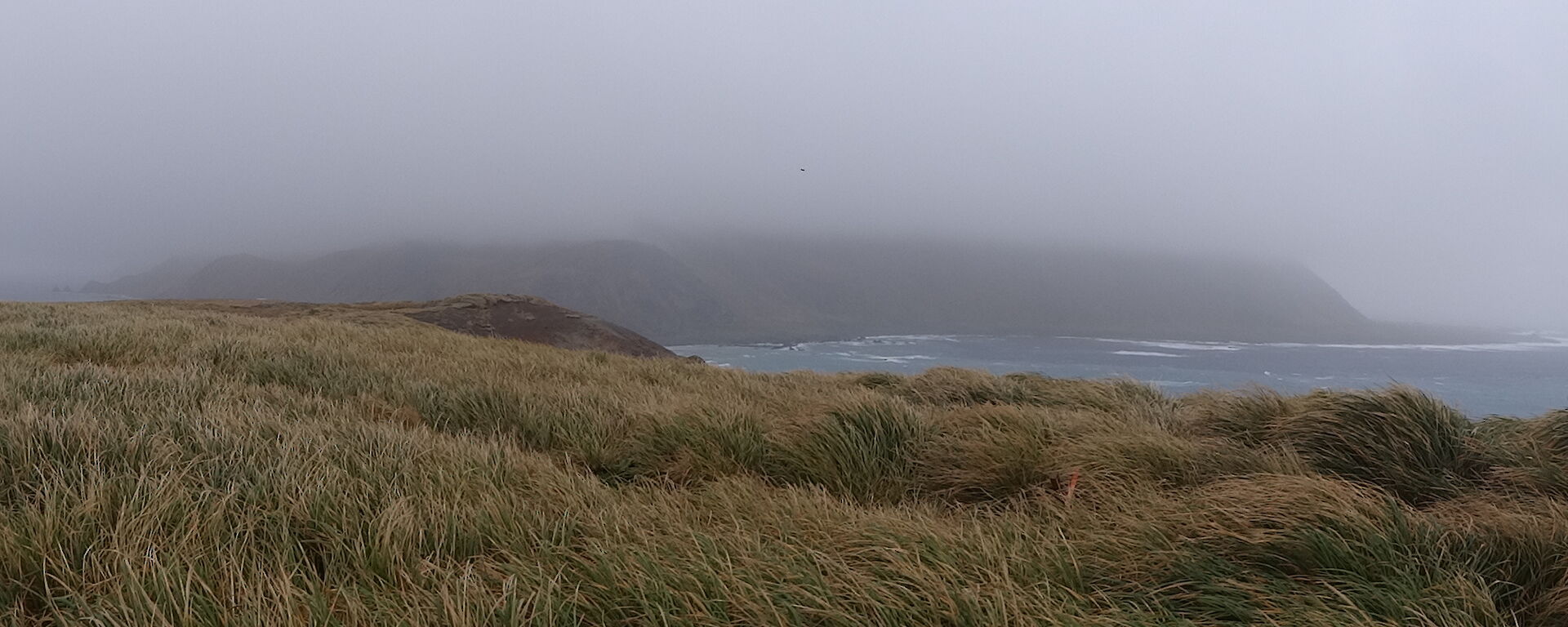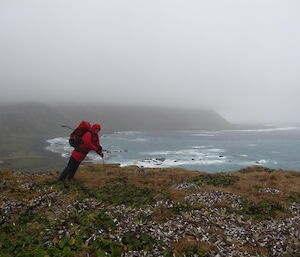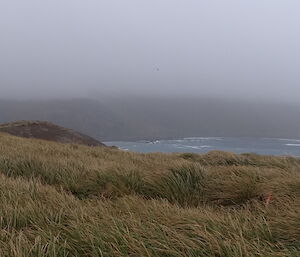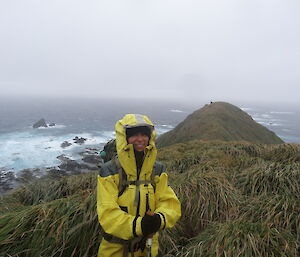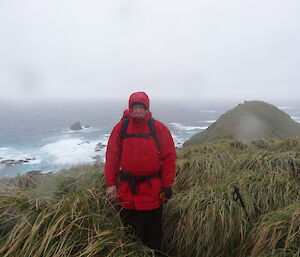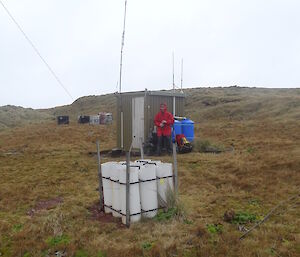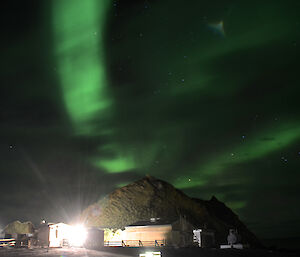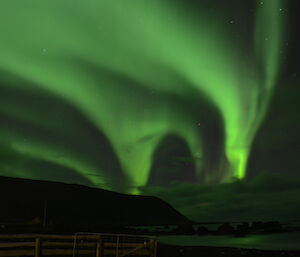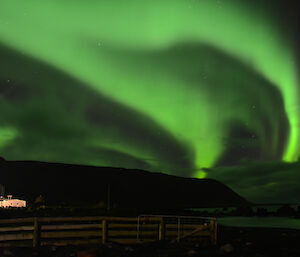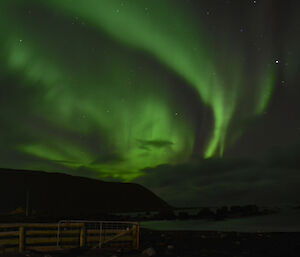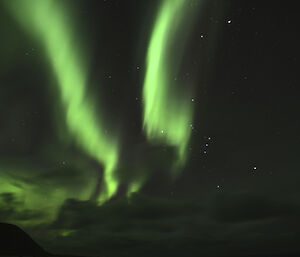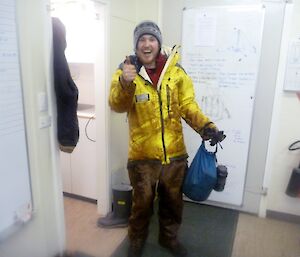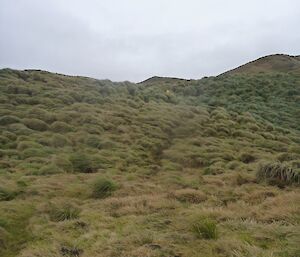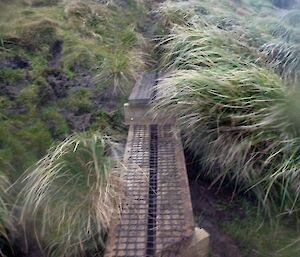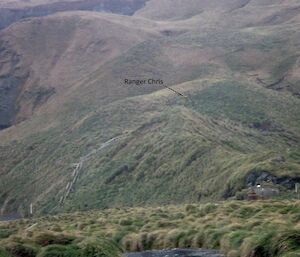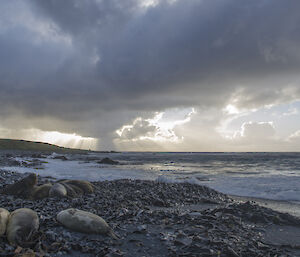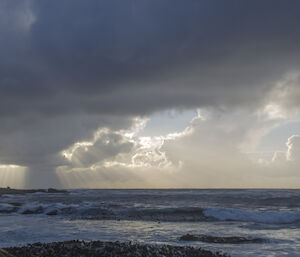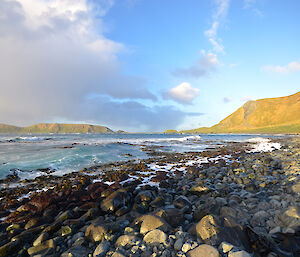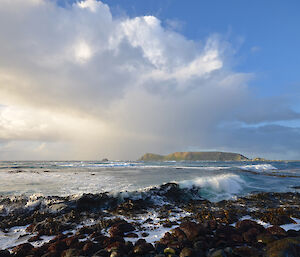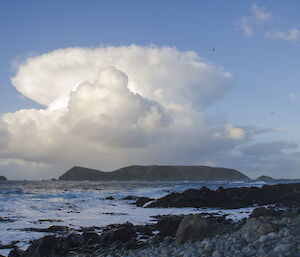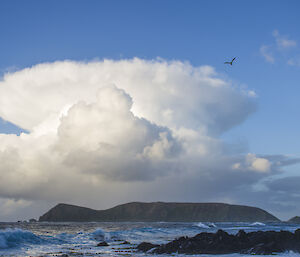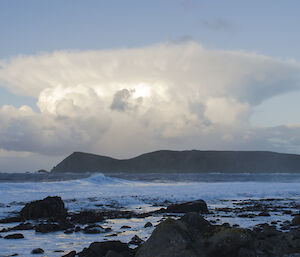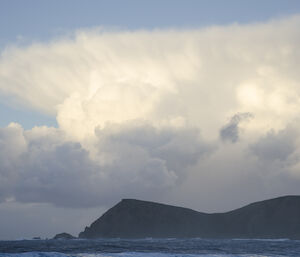Finally, after several weeks of being home bound on station due to an injury, Patty set out for a stroll up to North Head. With Dave as her anchor, they climbed their way up the crest of the hill and on to the North Head plateau.The wind was up and it was a little bit moist but it felt good and the views were inspiring.
We visited and payed our respects at the memorial of John Windsor, Macquarie Island MET expeditioner who died on the 5th of January 1995.
Moving on up the track, we could see the remains of the first radio mast on North Head, now a stump! The mast was rigged and wenched up top on a flying fox in 1911 by Sir Douglas Mawson and his team.
Standing at the end of the walking track, we looked out to the four directions :Africa to our west, Tassie and Australia to the north, New Zealand and South America to our east and the Antarctic continent to our south.
We stopped for a snack at the radio shack and then made our way back down for a nice hot cuppa.

